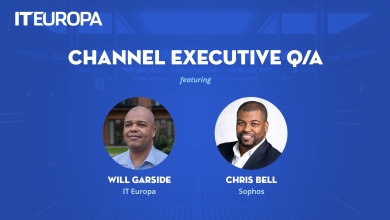
Rob Harrison of Sophos says advanced cybersecurity is now a strategic investment, cutting insurance claims and recovery times while boosting ROI.
When it comes to cybersecurity investment, the battle lines are often drawn between Chief Information Security Officers (CISOs) prioritising resilience and Chief Financial Officers (CFOs) scrutinising return on investment (ROI). Though cybersecurity has long been viewed as a necessary expense, it is vital in many instances in keeping an organisation operating.
Research from Sophos suggests that investment in advanced cybersecurity technologies and services can offer clear financial returns, with cyber insurance claims providing clear quantification of the reduced business impact of cyber threats on organisations with elevated defences.
As attacks become far more frequent, more costly, and more sophisticated, many businesses are turning to cyber insurance as a part of their risk mitigation strategy. And the security measures an organisation puts in place can directly influence both its risk exposure and the cost of insuring against that risk. Sophos’ research shows that businesses with more sophisticated cybersecurity defences are not only better protected but achieve cost savings in the long term.
Insurance in an evolving threat landscape
The cyber insurance market has undergone rapid evolution over recent years, with underwriters today scrutinising applications closely. Businesses are expected to meet a minimum threshold of cybersecurity maturity just to be eligible for cover. In many cases, insurers are asking for proof of measures such as endpoint protection, incident response protocols, and dedicated employee awareness training.
These requirements have emerged in direct response to the scale of claims being filed. The average cost of a ransomware attack can be catastrophic for many organisations, with Sophos’ State of Ransomware 2025 finding that the average ransom demand is now $1.3 million (£1 million approx). In such a volatile environment, underwriters are increasingly using the presence – or absence – of advanced cybersecurity as an indicator of risk. And the effect on policy pricing and payout is significant.
Reducing costs with advanced cybersecurity
Sophos’s research makes a strong case for cybersecurity investment – particularly in Managed Detection and Response (MDR) services. MDR combines human-led threat hunting and response with advanced tools, which is designed to provide 24/7 visibility and protection – keeping your organisations protected against threats around-the-clock,
According to the research, organisations relying solely on basic endpoint protection reported median cyber insurance claims of $3 million (£2.2 million approx.) following a security incident. That figure dropped to $500,000 (£370,000 approx.) for those using Endpoint or Extended Detection and Response (EDR/XDR) solutions. But for businesses using MDR, the median claim dropped dramatically to just $75,000 (£55,000 approx.) – a 97.5% reduction in claim size compared to those relying on endpoint tools alone, demonstrating the reduced financial and operational impact of cyber-attacks.
This kind of ROI is hard to ignore. Ensuring good cybersecurity offers more than a protective shield, it also provides financial efficiency, allowing organisations to contain the scale of incidents before they spiral into business-crippling attacks.
Speed, predictability, and strategic value
The value of MDR extends far beyond minimising the size of cyber insurance premiums. It can also improve how quickly and reliably organisations can bounce back from an attack and the associated costs of downtime. Sophos’s latest research shows that 47% of MDR users were fully operational within a week of an incident, while only 27% of EDR/XDR users and 18% of those relying solely on endpoint protection achieved the same.
For sectors where downtime can be catastrophic, such as healthcare, financial services, and critical infrastructure, speed and predictability are vital. The ability to contain incidents and return to normal operations within a known timeframe helps reduce exposure not only to financial losses, but also to reputational damage and regulatory penalties.
For IT leaders and CISOs, MDR and other advanced cybersecurity solutions offer a tangible way to demonstrate value – connecting security decisions to board-level concerns like risk mitigation, operational resilience, insurance premiums, and ROI. Reframing cybersecurity from a sunk cost to a strategic investment.
In a more complex insurance market, where underwriters are scrutinising all elements of your business operations, MDR adoption could become a prerequisite for favourable coverage. Businesses that can demonstrate robust, proactive security postures stand a better chance of keeping premiums down and securing broader protection.
For Managed Service Providers (MSPs) and channel partners, these insights create a powerful new lens through which to sell security services. It’s no longer just about technical capability – it’s about reducing long-term costs, strengthening resilience, and helping their customers stay insurable. Cybersecurity is not just essential – it’s high-impact, measurable, and central to long-term business success.
A New Era for Security Spending
Businesses that invest in detection and response capabilities – particularly those that embrace MDR – are better prepared, more resilient, and less financially exposed when a breach occurs. In an era of complex threats and rapidly evolving insurance markets, cybersecurity is no longer just about avoiding an attack. It’s about minimising the damage when the inevitable happens.
Smart investment today can mean the difference between a minor disruption and a multi-million-pound payout tomorrow. In that sense, cybersecurity is not just a cost of doing business – it’s one of the most valuable insurance policies a company can have.


